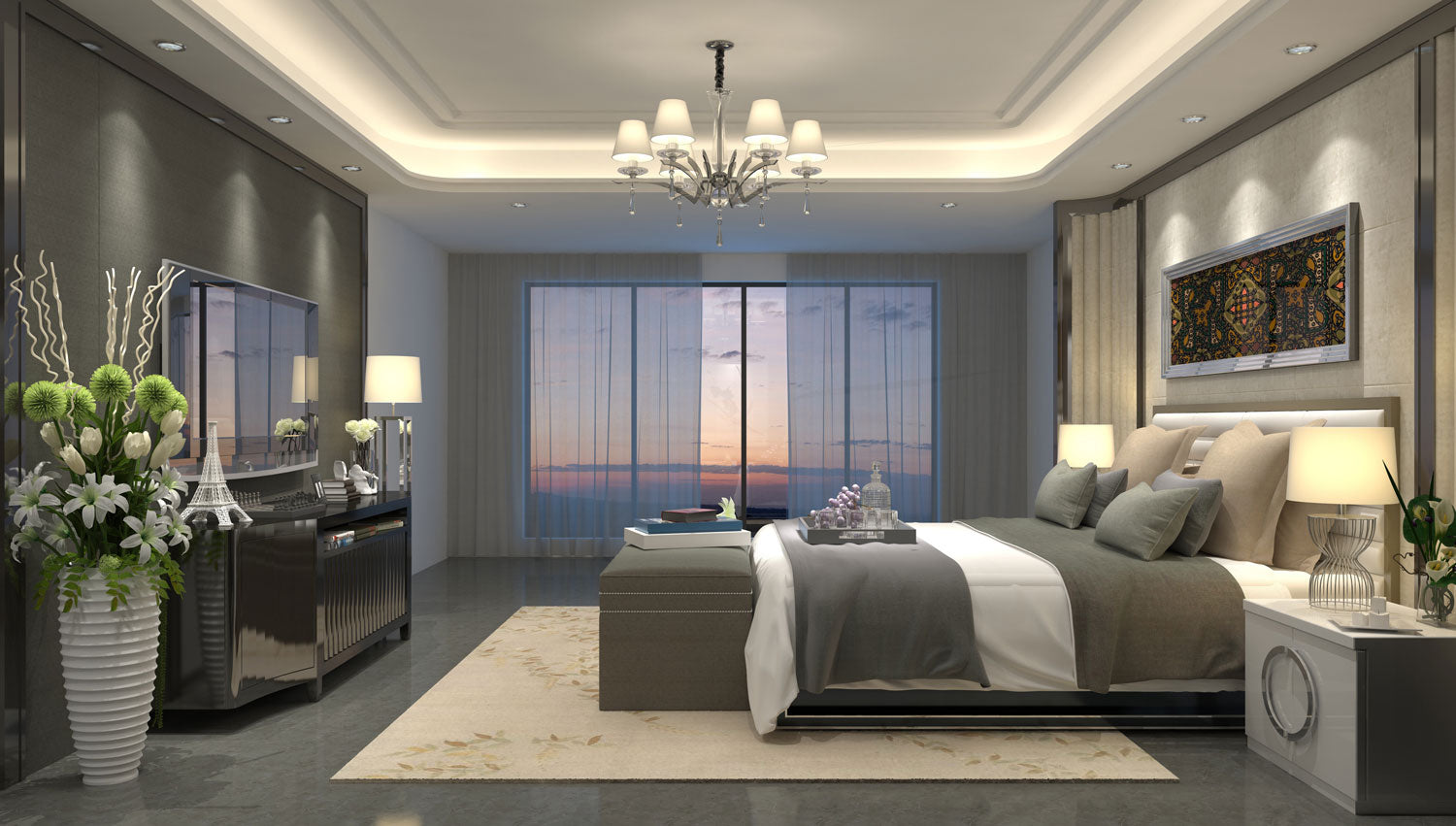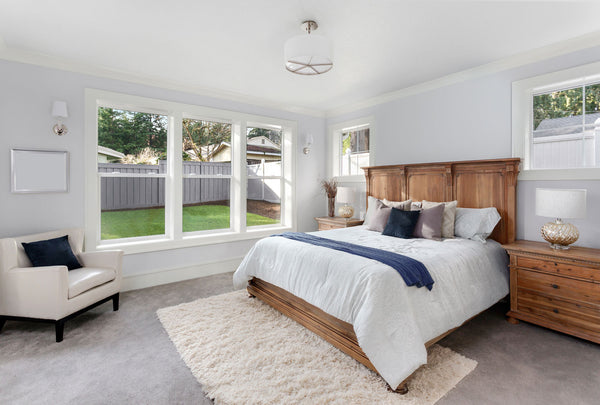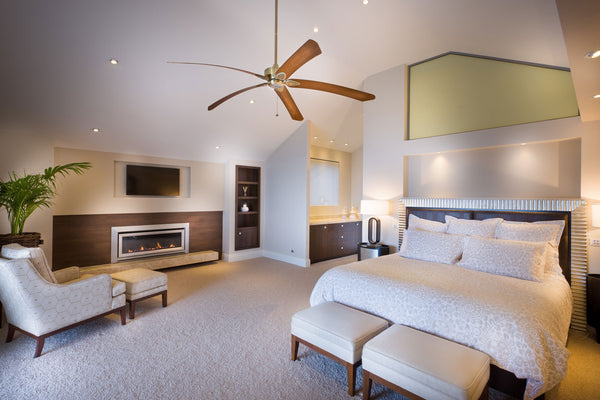On orders $99+
On orders $99+


The art of creating a comfortable and relaxing bedroom space lies in the strategic deployment of lighting fixtures. In fact, the impact of bedroom lighting on the look and feel of the space cannot be overemphasized. In this comprehensive guide, we will explore where to start when planning bedroom lighting, the different types of lighting fixtures required, and how an interior designer would deftly integrate each element into the design.
To begin, the quest for the perfect bedroom lighting begins with a careful consideration of the overall aesthetic and mood you want to create in the space. The selection of the appropriate color scheme, furniture, and accessories in the room can significantly influence this decision. Once you have a clear idea of the style you want to achieve, you must then carefully analyze the different types of lighting fixtures that can help to bring that vision to life.

The first category of lighting fixtures you need to consider when planning bedroom lighting is the overhead lighting. Overhead lighting is an essential element in any bedroom as it provides general illumination for the space and is often the brightest source of light in the room. The most common types of overhead lighting fixtures are ceiling fixtures and chandeliers. Interior designers often select fixtures that match the overall style of the room while also providing sufficient light.
Task lighting is the second category of lighting fixtures required in a bedroom. This type of lighting is essential for activities that require more focused light, such as reading, applying makeup, or working on a laptop. Some common types of task lighting in a bedroom include bedside lamps, wall-mounted reading lights, and desk lamps. Interior designers may opt for task lighting fixtures that are adjustable and easy to position for maximum effectiveness.
Finally, the third category of lighting fixtures to consider when planning bedroom lighting is accent lighting. Accent lighting can add depth and interest to a bedroom by highlighting specific areas or decor items. This type of lighting is usually lower in intensity than overhead or task lighting and is often used to create a cozy atmosphere. Examples of accent lighting fixtures include wall sconces, under-cabinet lighting, and recessed lighting. Interior designers often select accent lighting fixtures that complement the overall design scheme while also highlighting specific features or decor items.

When implementing each type of lighting fixture, an interior designer must pay attention to specific factors to ensure maximum effectiveness. For overhead lighting, the choice of fixture is proportional to the size of the room, while the height of the ceiling can influence the selection of the fixture. Task lighting fixtures should be both functional and visually appealing, with adjustable arms, dimmer switches, and appropriate positioning. For accent lighting, fixtures should add visual interest to the space without overpowering it.
In conclusion, creating a comfortable and inviting bedroom space requires a strategic deployment of lighting fixtures. Bedroom lighting planning should consider the overall style and mood of the room, as well as the different types of lighting fixtures required. Working with an interior designer can guarantee that bedroom lighting is not only functional but also visually appealing and complementary to the overall design scheme.
Leave a comment